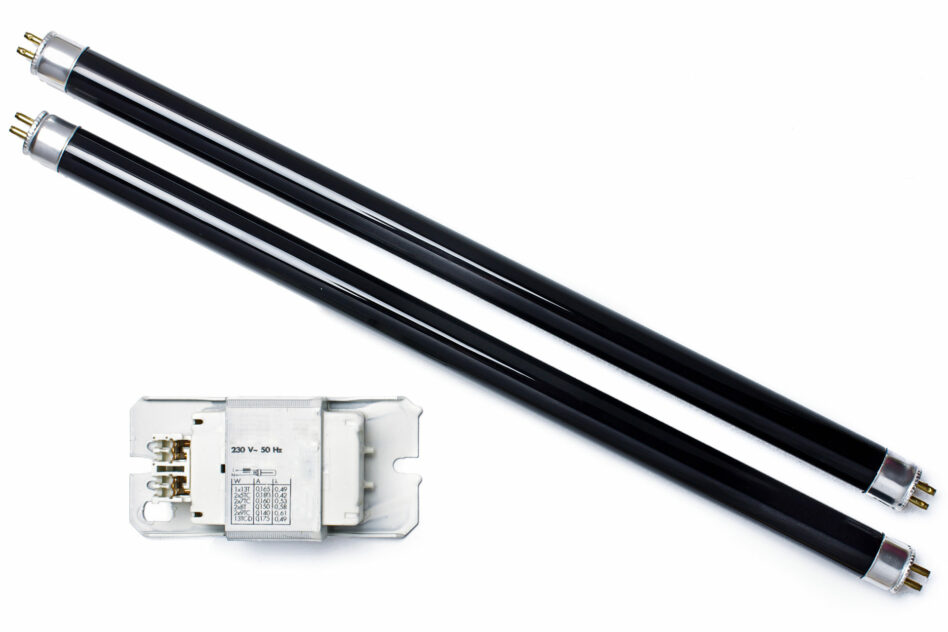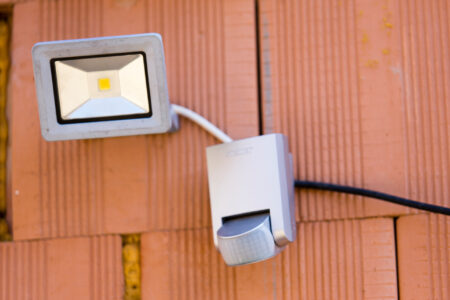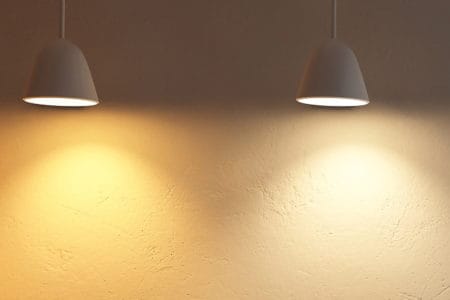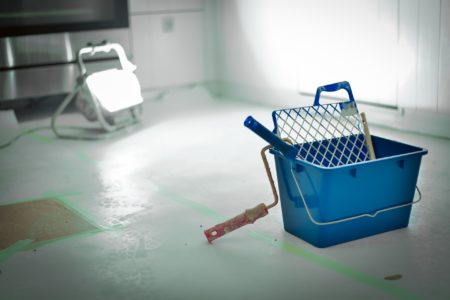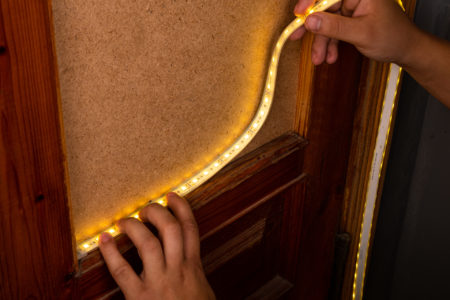Ballasts are essential for traditional fluorescent or gas discharge light bulbs to operate properly. But what about LED lights? Do you also need a ballast for LED lights? The quick answer is no. Read on to learn about the details why they don’t need one and why this is a good thing.
What’s a Ballast?
Did you ever notice a slim black box with some wiring inside your fixtures or tube lights? Yes, that’s a ballast.
Simply put, the ballast is a device that controls the electric current in your lighting system. It has two main functions: starting the lamp and controlling its operation. Ballasts provide a suitable power supply for the bulb to light up, and they protect the bulb from any damage that could occur if the lamp receives too much power.
Fluorescent, gas discharge, and HID lamps all require a ballast. Whether it’s an electronic or magnetic ballast, these lamps can’t operate without it.
Since these lamps lack a regulator, they can draw too little or too much energy. As a result, the bulb might burn or dim out. That’s when the ballast comes in handy.
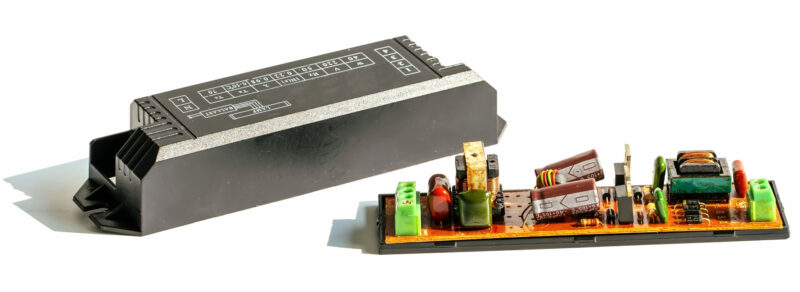
Do LED Lights Require a Ballast to Work?
While some people still use traditional bulbs, the majority are shifting to modern LED lights. Well, guess what? LED lights don’t need a ballast to operate because they work differently than traditional light bulbs.
LED bulbs use direct current, so they need an AC-to-DC converter, not a ballast. What’s more, LED lights are much smaller than traditional bulbs, so there’s no room for a ballast to fit in.
But how do LED lights regulate the received electric current? Good question! LED lights use a driver that mimics the function of ballasts.
What Are LED Drivers?
Drivers are small components in LED light bulbs that regulate the electric current to a single LED light or multiple lights and strings. They’re designed to fit inside the bulbs, so in most cases, you won’t need to purchase a separate one for your LED bulb.
LED drivers have two main functions. First, they convert the AC (alternating current) that reaches households to DC (direct current).
Additionally, LED drivers prevent any current fluctuations as they supply a constant electric current to the lamp. That way, they protect your lamps from overheating.
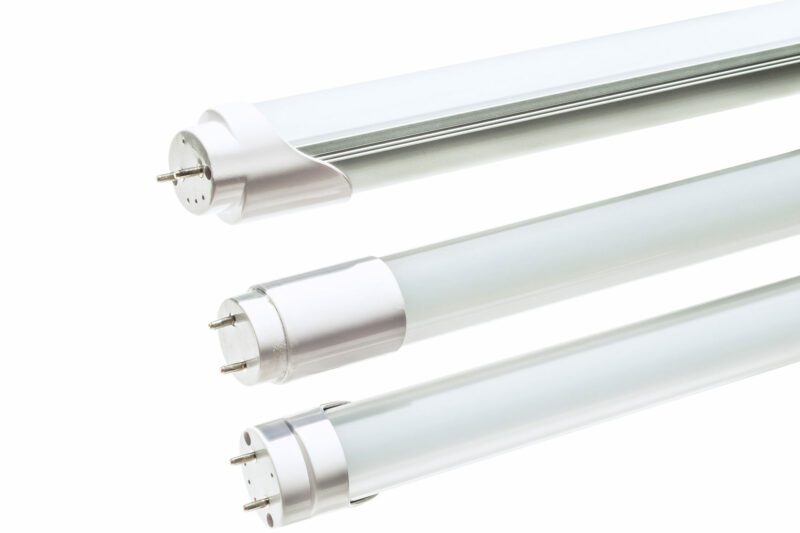
The Two Main Types of LED Drivers
LED drivers are divided into two types: constant voltage and constant current. But what’s the difference?
Constant voltage drivers are suitable for a single DC output voltage. Most constant voltage drivers on the market are 12 VDC or 24 VDC. Meanwhile, the power that comes from the wall outlet in your home is most likely 120 – 277 VAC.
Constant voltage drivers will change this VAC to a low direct current voltage (VDC). The driver will maintain this voltage no matter what kind of load is put on. This means that if you have a group of LEDs in a strip, tape, or ribbon, you’ll probably need to fit a constant voltage driver.
On the other hand, constant current drivers are suited for a range of output voltages and a constant output current. LEDs operating with constant current drivers need a specific current supply, which is usually specified in milliamps.
These drivers change the voltage through an electronic circuit while allowing a constant current through the whole system. They come in handy when you have a group of high-powered LEDs working at once.
Do I Need to Buy a Separate Driver for LED Lights?
The answer depends on the type of LED lights you’re installing. For example, most LEDs are intended for household use, and they contain internal drivers, such as bulbs with E26 / E27 and GU24 / GU10 bases.
If you’re installing these lights, you won’t need an external driver as they already have one. On the other hand, some types of LED lights such as tape lights, panels, and outdoor-rated lights, require an external driver to operate.
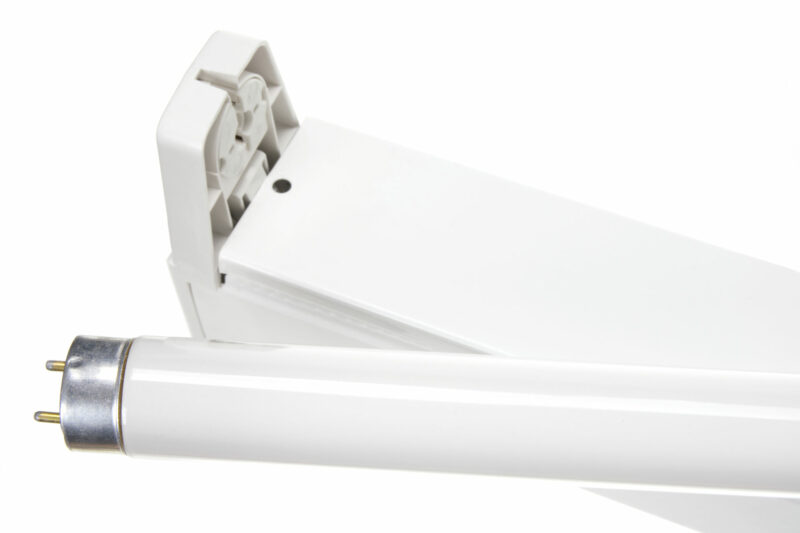
Can I Use a Ballast for an LED Light?
One of the reasons people opt for LED lights is their ease of use. You don’t need any extra equipment to operate your new set of LED lights. Some LED bulbs are even built to fit old ballasts, even if they don’t require them.
If you already have a ballast for your old lighting system, it can take time, effort, and money to remove it to install your LED set. That’s when plug-and-play LEDs come in handy. Even though these lamps don’t need a ballast to work, you can use them in a fixture that contains a ballast.
Purchasing a plug-and-play bulb and installing it on your existing ballast is a simple and quick way to convert your traditional lights to LED fixtures. Plug-and-play lamps ensure you don’t need any extra modifications to upgrade your lighting system. Plus, you won’t spend much on installation.
Before you go ahead and place your new LED lights in your old fluorescent fixtures, there are some things to consider. First, you’ll need to learn about the available types of LED tubes. There are ballast-compatible LED tubes and ballast bypass LED fluorescent replacement tubes.
Important: Before installing any LED replacement into your fixture containing a ballast, ask your qualified electrician to make sure it is compatible.
Ballast Compatible Tubes
Ballast-compatible tubes can go directly into your existing fixture and will operate normally, which makes them highly convenient. It’s also why they’re otherwise called plug-and-play tubes. However, these tubes might not be compatible with your ballast.
Why? Because there are three main types of ballasts: electronic, magnetic, and instant start. You’ll find that most plug-and-play tubes on the market are compatible with one or two types of ballasts, but not all of them.
So, you’ll need to check the user’s manual first to make sure of the compatibility.
Ballast Bypass LED Replacement Tubes
Ballast-bypass tubes are compatible with pretty much all linear fluorescent fixtures and can work with all ballast types and ballast-free LED fixtures. In other words, if you choose a ballast bypass tube, you’ll be able to use it with whatever fixture you have. You don’t have to worry about compatibility.
But how is that possible? When you install ballast-bypass tubes, you’ll have to remove the ballast. That means your household power goes directly to the lamp’s socket, which eliminates the use of the ballast.
